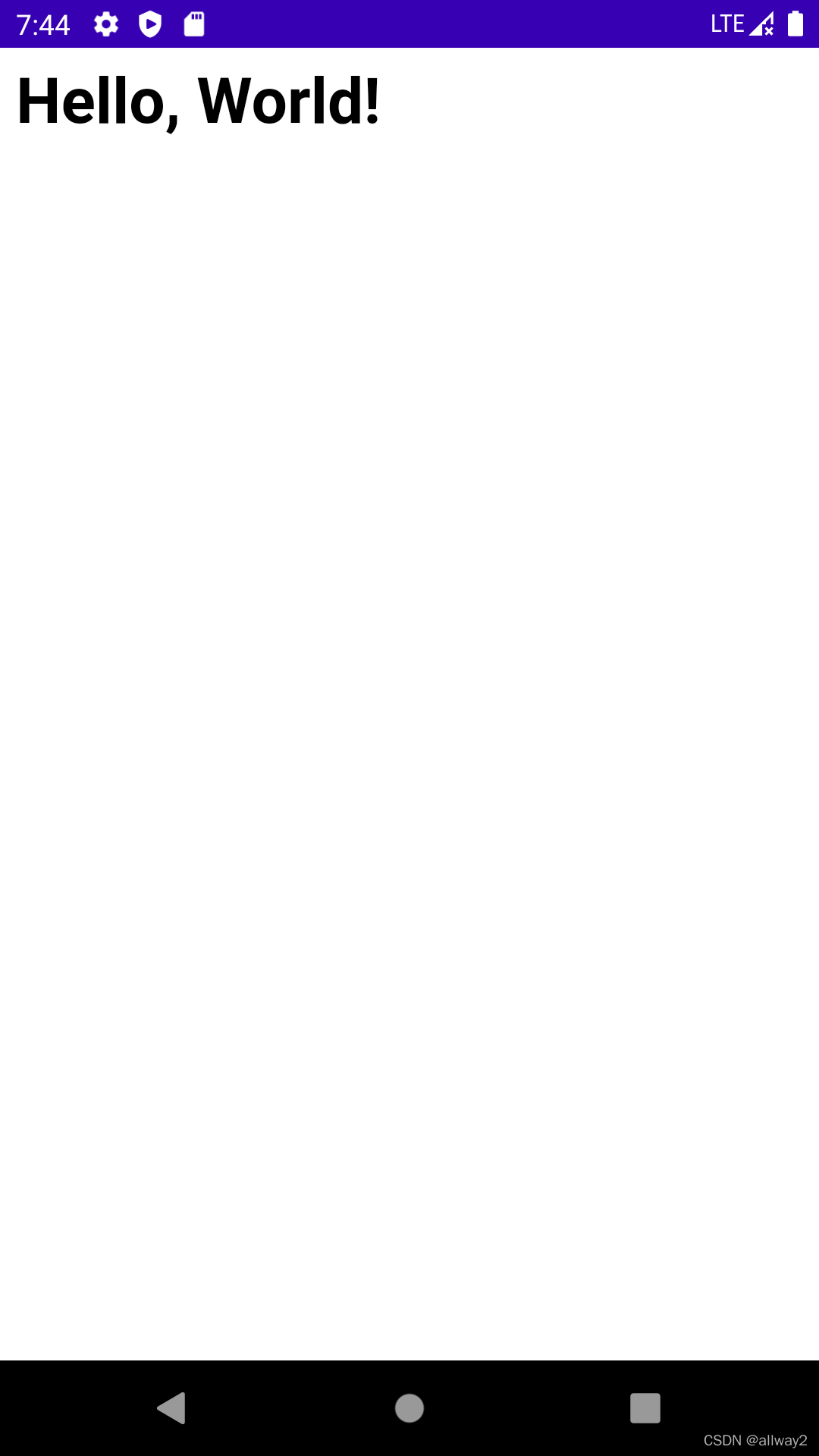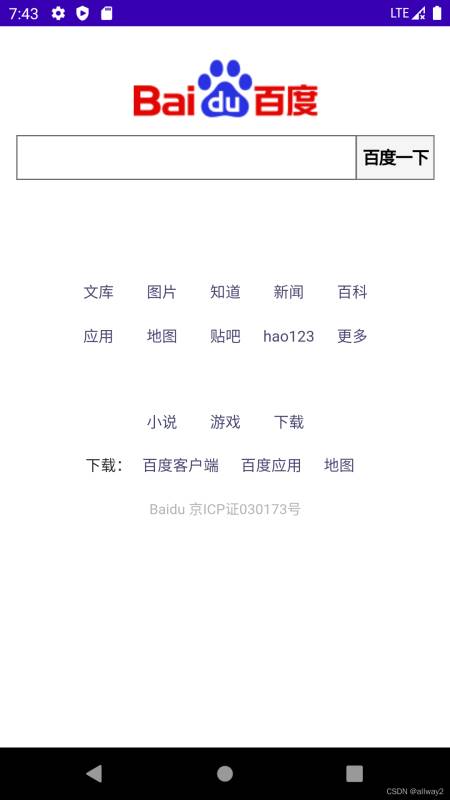Android WebView控件
allway2 人气:1Android WebView用于在 android 中显示网页。可以从相同的应用程序或 URL 加载网页。它用于在 android 活动中显示在线内容。
Android WebView 使用 webkit 引擎来显示网页。
android.webkit.WebView 是 AbsoluteLayout 类的子类。
Android WebView 类的loadUrl()和loadData()方法用于加载和显示网页。
Android WebView 示例
让我们看看使用 Web 视图显示 baidu.com 网页的简单代码。
WebView mywebview = (WebView) findViewById(R.id.webView1);
mywebview.loadUrl("http://www.baidu.com/"); 让我们看看使用 Web 视图显示 HTML 网页的简单代码。在这种情况下,html 文件必须位于资产目录中。
WebView mywebview = (WebView) findViewById(R.id.webView1);
mywebview.loadUrl("file:///android_asset/myresource.html"); 让我们看另一个显示字符串的 HTML 代码的代码。
String data = "<html><body><h1>Hello, Javatpoint!</h1></body></html>"; mywebview.loadData(data, "text/html", "UTF-8");
完整的 Android WebView 示例
让我们看一个完整的 Android WebView 示例。
activity_main.xml
<?xml version="1.0" encoding="utf-8"?>
<androidx.coordinatorlayout.widget.CoordinatorLayout xmlns:android="http://schemas.android.com/apk/res/android"
xmlns:app="http://schemas.android.com/apk/res-auto"
xmlns:tools="http://schemas.android.com/tools"
android:layout_width="match_parent"
android:layout_height="match_parent"
tools:context=".MainActivity">
<WebView
android:layout_width="match_parent"
android:layout_height="match_parent"
android:id="@+id/webView"
app:layout_constraintBottom_toBottomOf="parent"
app:layout_constraintLeft_toLeftOf="parent"
app:layout_constraintRight_toRightOf="parent"
app:layout_constraintTop_toTopOf="parent" />
</androidx.coordinatorlayout.widget.CoordinatorLayout>要在应用程序中本地添加网页(.html、.jsp),需要将它们放置在 assets 文件夹中。资产文件夹创建为:右键单击应用程序 -> 新建 -> 文件夹 -> 资产文件夹 -> 主目录,或者简单地在主目录中创建资产目录。
MainActivity.java
package com.example.webview;
import android.os.Bundle;
import android.webkit.WebView;
import android.webkit.WebViewClient;
import androidx.appcompat.app.AppCompatActivity;
public class MainActivity extends AppCompatActivity {
@Override
protected void onCreate(Bundle savedInstanceState) {
super.onCreate(savedInstanceState);
setContentView(R.layout.activity_main);
WebView mywebview = (WebView) findViewById(R.id.webView);
mywebview.loadUrl("http://www.baidu.com");
//系统默认会通过手机浏览器打开网页,为了能够直接通过WebView显示网页,则必须设置
mywebview.setWebViewClient(new WebViewClient(){
@Override
public boolean shouldOverrideUrlLoading(WebView view, String url) {
//使用WebView加载显示url
view.loadUrl(url);
//返回true
return true;
}
});
/* String data = "<html><body><h1>Hello, World!</h1></body></html>";
mywebview.loadData(data, "text/html", "UTF-8");*/
//mywebview.loadUrl("file:///android_asset/myresource.html");
}
}AndroidManifest.xml
<?xml version="1.0" encoding="utf-8"?>
<manifest xmlns:android="http://schemas.android.com/apk/res/android"
package="com.example.webview">
<application
android:allowBackup="true"
android:icon="@mipmap/ic_launcher"
android:label="@string/app_name"
android:roundIcon="@mipmap/ic_launcher_round"
android:supportsRtl="true"
android:usesCleartextTraffic="true"
android:theme="@style/Theme.WebView">
<activity
android:name=".MainActivity"
android:exported="true"
android:label="@string/app_name"
android:theme="@style/Theme.WebView.NoActionBar">
<intent-filter>
<action android:name="android.intent.action.MAIN" />
<category android:name="android.intent.category.LAUNCHER" />
</intent-filter>
</activity>
</application>
<uses-permission android:name="android.permission.INTERNET"></uses-permission>
</manifest>输出:
如果加载 HTML 页面,让我们看看输出。

如果您加载 baidu.com 网页,让我们看看输出。

总结
加载全部内容